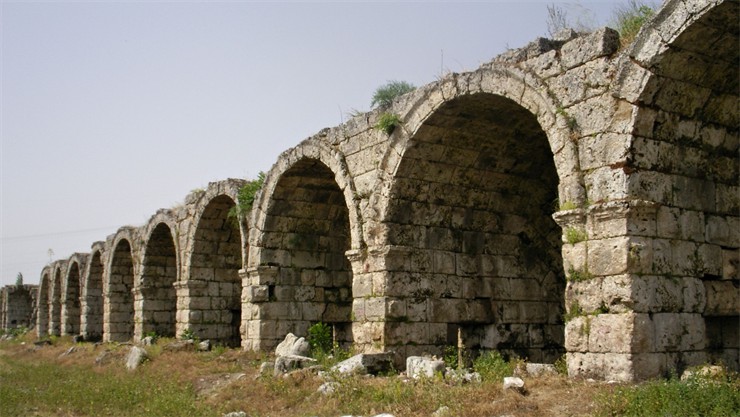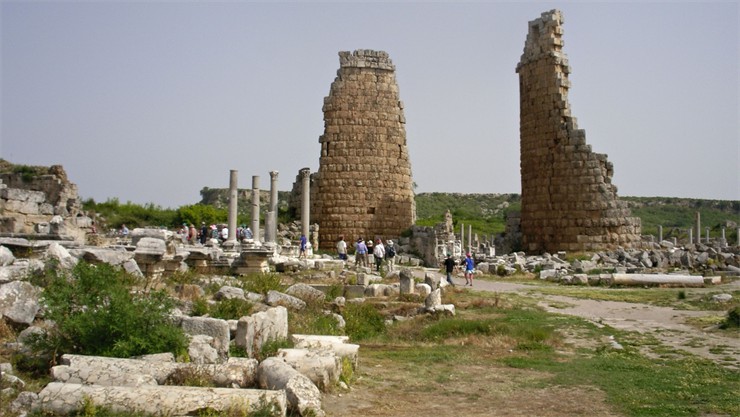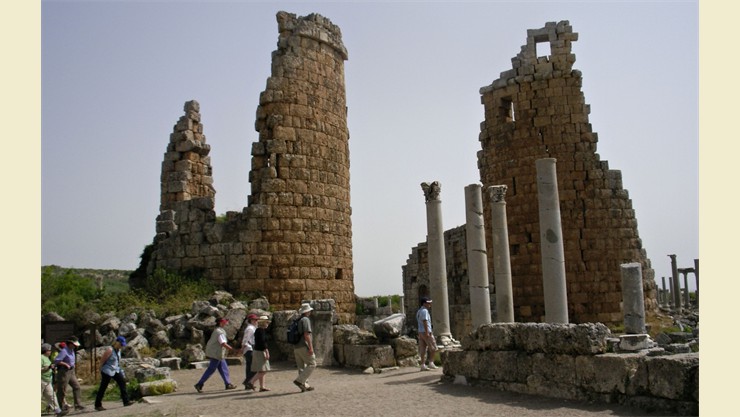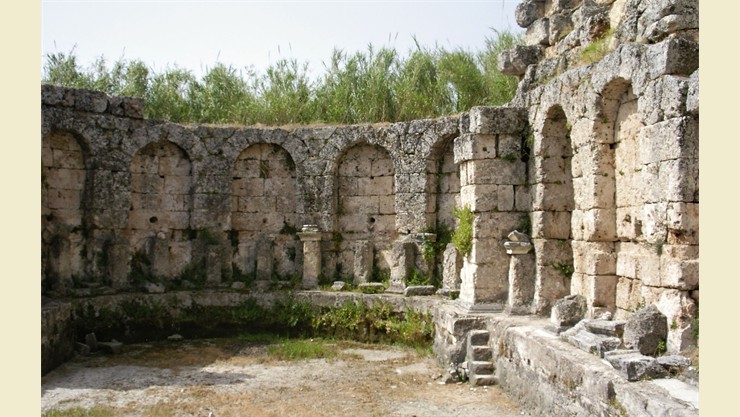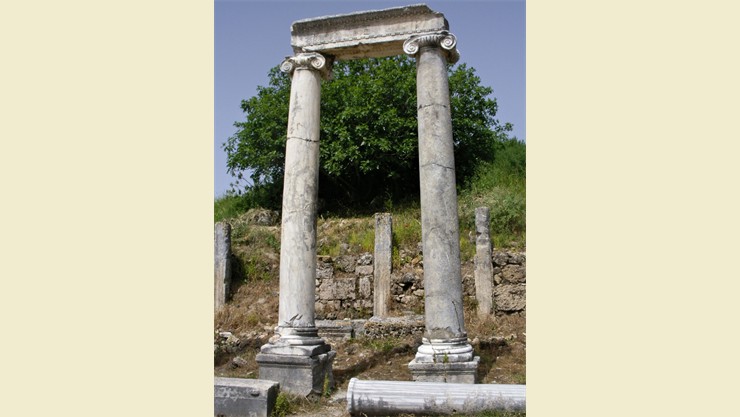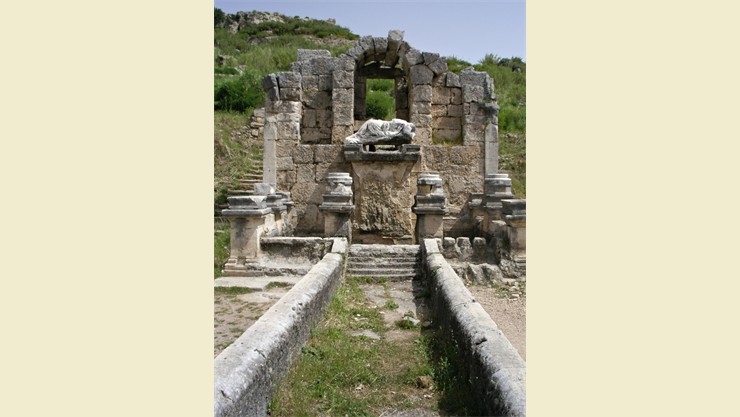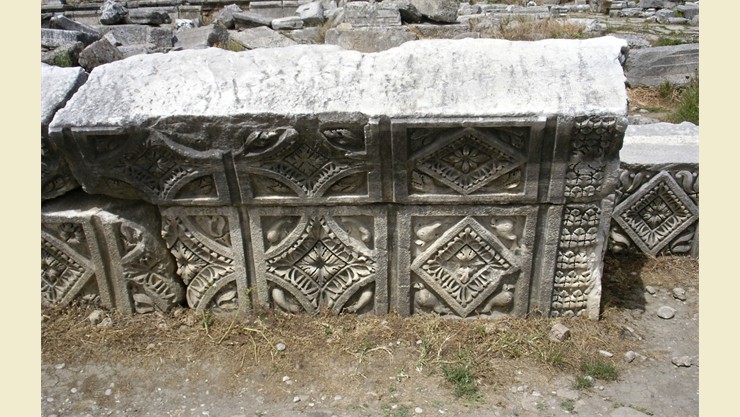The foundation of Perge dates back to the times shortly after the Trojan wars. The legendary Trojan seers Kalchas and Mopsos are mentioned as founders. Perge was one of the most important cities of ancient Pamphylia, along with Aspendos, Sillyon and Side. In the time of the campaigns of Alexander the Great Perge is mentioned for the first time directly in the historiography. The previously Persian city voluntarily submitted to the Macedonian king and thus escaped siege or destruction.
Perge received its very well preserved city wall, reinforced with defense towers, in the Seleucid Empire. Perge is mentioned in the New Testament because Paul, coming from Cyprus, continued his missionary journey from here to Konya. From the 7th century AD, Perge, like many cities in the south and west of Turkey, suffered from pirate raids and the population migrated to neighboring Antalya, which was better protected. By the Seljuk period, Perge was deserted.
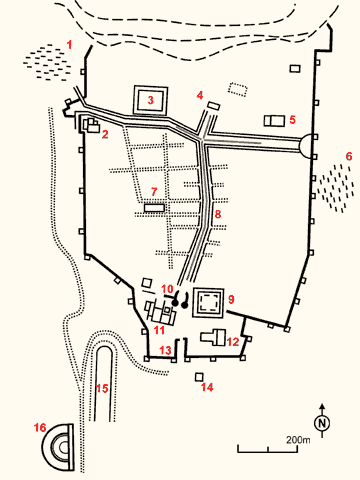
1 Nekropole
2 Thermal facilities
3 Palästra
4 Nymphäum
5 Temple
6 Nekropole
7 Church
8 Grand boulevard
9 Agora (Meeting place)
10 Hellenistic city gate
11 Thermal facilities
12 Church
31 Roman city gate
14 Tomb of Plancia Magna
15 Stadion
16 Theatre
touch the numbers on the map with the mouse!
When we visited, the theater (16) is being renovated. A tour operator has taken over the costs. The stadium (15), had room for at least 10,000 spectators. The vaulted structures on which the rows of spectators are built are very well preserved. Some served as entrances to the stadium, but most were used as stores or storage rooms. The city itself is enclosed by a well-preserved city wall from the 3rd century BC. Especially on the eastern side you can see towers preserved almost to their original height.
There are two southern city gates. The newer gate (13) protected the city extensions, which were built in Roman times, i.e. around the 1st century AD. The extension part contains on the left side a spacious bath complex (11), where you can also admire the heating technology used at that time. Fountains, pools and resting rooms alternate and everything was extremely luxuriously decorated with marble.
The older gate (10), about 80 meters further inside, dates like the city wall from the 3rd century B.C. and is much more impressive, being inside, behind the mighty defense towers extended by a horseshoe-shaped "reception area", which at that time was lined with marble and decorated with statues (some of these statues can be admired in the museum in Antalya). From here the path leads directly to the colonnaded street (8) and then continues north across the city to the Nymphaeum (4), where the Acropolis Hill then marks the northern boundary of the city. To the left and right of the boulevard one finds the old residential areas and even remains of a church dating back to Byzantine times (7). The boulevard was laid out in "two lanes"; in the center a watercourse fed by the northern nymphaeum, outside shady colonnades in front of residential and commercial buildings.
In the northern part of the colonnade street crosses another quite wide street, which runs through the whole city from the eastern to the western city gate. On this street, in the north-western part of the city, are the ruins of the Palestra (3); in the north-eastern part is another temple (5).
To the east, next to the old southern gate of the city, there is the Agora (9), which is direct and surrounded by colonnades and small plots for stores. The walkways are covered with sand. This is to protect the mosaics underneath.
